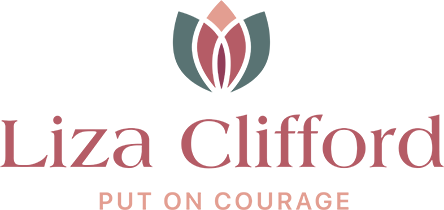Why Not All Bra Cups Are Created Equally

When you step into a shop to pick out a new bra, you might think, “A D cup is always a D cup, right?” That’s something we hear all the time in our fitting rooms, and it sounds simple but it’s wrong. At Liza Clifford Professional Bra Fitting Studio, we’ve learned that bra cups are not fixed in volume. The band size you choose makes all the difference. You could line up a 32D, a 34D, and a 38D, and each would look and feel very different. The band number has a big effect on cup volume and, actually, your comfort too. Let’s look at the reason behind it.
The Connection Between Cup and Band Sizes
A bra’s cup can’t be measured on its own, like an item sitting on a shelf. What the cup holds is completely tied to the band size, i.e., the number you see on the label, like 32, 34, or 36. Think about it: a 32D actually holds less than a 34D, and a 34D holds less than a 36D. The letter (like “D”) isn’t a set measurement; it just means the difference between your bust size and the band. Isn’t that surprising? You’d imagine the “D” always means one thing, but in fact, as the band gets wider, so does the cup’s volume.
Finding Your Perfect Fit with Sister Sizes
How do you put this to use? That’s where sister sizes come in. Sister sizes are different band and cup combinations that end up giving you about the same cup volume, so you can swap between them when needed. Here’s how it works: if your band is too snug, try going up a band and down a cup (for example, swap from 32D to 34C). If it’s much too loose, do the opposite: go down a band and up a cup (from 34D to 32DD). This little trick can make a big difference if the bra product you want isn’t available in your usual size, or if you just need a change for better comfort.

The Impact of Bra Style and Fabric on Fit and Comfort
Let’s be honest, not every bra feels the same, even if the label matches. Why is that? Different styles and fabrics can totally alter the fit. Imagine a bra with soft, stretchy fabric. That will often feel looser, so sometimes you need a tighter band. A lacy bra might not flex like a moulded, padded one. Then there are styles: a plunge bra sits low in the centre, while a full cup covers much more and often fits firmer. Seams matter too. Sometimes, the effect of switching from a plunge to a full cup means you actually need a different sister size to get the right shape and hold.
Quick Steps to Check Your Bra Fit
Can you tell if a bra really fits? Use this straightforward checklist to find out. Each step can help you make sure a bra gives you proper support and comfort.
- Make sure your band stays level and feels snug all round. If it rides up or sags, most of your support is gone. Remember, the band gives about 80% of the support for your bust.
- The centre, called the gore, needs to be sitting flat between your breasts without pulling away. If it lifts from your chest, usually your cup is too small or your band’s too loose.
- Cups must contain all of your breast tissue, with no bulges over the top or sides and no gaps. Too much space or spillage is a sign to check both your size and your sister sizes.
- Look at the fabric: it should sit flat and smooth, no bunching or wrinkles. If you see creases or digging, it’s time to update your fit for that product.
- Your straps should not dig in or fall off. If they do, they’re either too tight or too loose; straps should help, but never handle the full weight.
How Liza Clifford Studio Elevates Your Bra Fitting Experience
There’s real freedom in knowing that a cup size isn’t set in stone. It comes down to finding the right band and cup match, and that’s more than just picking the usual letter or number. Getting this balance right is what changes a bra from just another item into the product you trust every day. If you’re feeling unsure or want the best for your body, our team at Liza Clifford Studio will help. Shop in our store online, check our bra size calculator or book a fitting. We’re here to guide you, and our return policy is clear and easy, so you can order with confidence.
FAQs
Can I wear a bra with a slightly different band size than usual?
Yes, it’s possible, if you use sister sizes the right way. If a bra feels too tight in the band, go up one band and down one cup. For instance, if you wear 32D, try 34C next time. As long as the new band keeps things firm and feels secure, it’ll hold you well. Just make sure the centre (gore) sits right and the band isn’t so loose it rides up.
Do bra materials and styles impact cup fit?
They definitely do! Soft, stretchy fabrics can make a cup feel roomier, and stiffer or lace bras may feel tighter all over. Some padding gives a firmer shape, while unlined bras mould to you. If you like plunge styles, expect less coverage than with a full cup. Don’t be shocked if you have to try a sister size to get the right effect in different products.
Do all brands follow the same sizing standards?
No, not all brands use the same sizing rules. Each brand has its own ways of making, grading, or shaping bras, so a 34D in one label might fit very differently in another. Try new bras on whenever you can or read up on a brand’s size advice. When trying a new product, start on the loosest hook so you can adjust as it settles in. That makes any return or policy check easier and your next purchase more comfortable.


